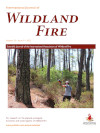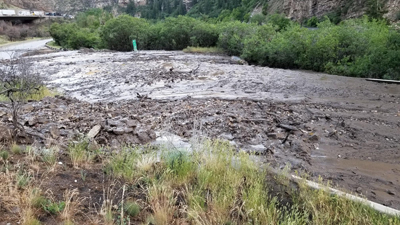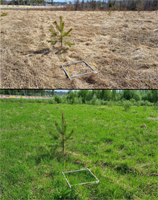
International Journal of Wildland Fire
Volume 32 Number 9 2023
WF22185The threatened Gouldian finch preferentially forages in prescribed burnt savannas
Using Animal Biotelemetry we showed that Gouldian finches preferentially usedareas which had undergone 2–3 years of early dry season prescribed burning.
WF22185 Abstract | WF22185 Full Text | WF22185PDF (3 MB) | WF22185Supplementary Material (1.9 MB) Open Access Article
To understand mainland quokkas’ use of habitat in relation to prescribed burns, and the effectiveness of fire exclusion within quokka range and habitat, we tracked movement patterns of 20 quokkas before and after prescribed burns and examined the important interactions between quokkas and prescribed fire in a flammable and fragmented landscape.
WF22196 Abstract | WF22196 Full Text | WF22196PDF (1.7 MB) Open Access Article
We project future numbers of simultaneous very large wildfires in Western USA based on outputs from climate simulations. In all regions, we project more fires and longer seasons of simultaneity, and years with high simultaneity becoming both more frequent and more extreme.
WF22107 Abstract | WF22107 Full Text | WF22107PDF (939 KB) | WF22107Supplementary Material (2.1 MB) Open Access Article
WF22200Predicting burn severity for integration with post-fire debris-flow hazard assessment: a case study from the Upper Colorado River Basin, USA
 , Todd J. Hawbaker
, Todd J. Hawbaker  , J. Kevin Hiers
, J. Kevin Hiers  , Jason Kean
, Jason Kean  , Rachel A. Loehman
, Rachel A. Loehman  and Paul F. Steblein
and Paul F. Steblein 

Burn severity influences post-wildfire hazards such as debris flows, which can occur soon after fires. We modelled burn severity based on pre-fire landscape and fire-weather conditions, and we integrated burn severity predictions with debris-flow models to inform hazard mitigation and planning.
WF22200 Abstract | WF22200 Full Text | WF22200PDF (4.8 MB) Open Access Article

After snowmelt, northern grasslands typically consist of highly flammable grass litter. We analysed a series of experimental grassland fires, as well as Swedish wildfire dispatch data, to isolate the impeding effect of grass phenology on fire propagation. A complete grassfire danger index is presented, likely applicable to most regions with cold (snow-covered) winters.
WF23013 Abstract | WF23013 Full Text | WF23013PDF (3.3 MB) | WF23013Corrigendum (533 KB) Open Access Article
WF23005Estimating Mediterranean stand fuel characteristics using handheld mobile laser scanning technology
Accurate, timely and easily obtainable information on stand fuel characteristics plays an important role in fire behaviour prediction. In this study, stand fuel characteristics were measured using handheld mobile laser scanning in six fuel types. The results were compared to those obtained through field fuel measurements from the same plots.
WF22220FireFormer: an efficient Transformer to identify forest fire from surveillance cameras
A Transformer-based model was proposed to identify the forest fire from surveillance camera images. This model proves to be superior in reducing the false alarm rate caused by the interference of different types of smoke, enabling to improve the efficiency of real-time monitoring and early warning of forest fires.
WF22220 Abstract | WF22220 Full Text | WF22220PDF (6.4 MB) Open Access Article
WF23034Effect of initial generating eddy height on formation and flame geometry of fire whirl
Fire whirl is an extreme fire behaviour in wildland fires occurring when buoyant fires are submerged in a generating eddy. The findings show that in addition to the heat release rate and the rotational strength, the initial generating eddy height also significantly affects the formation and flame geometry of fire whirls.



